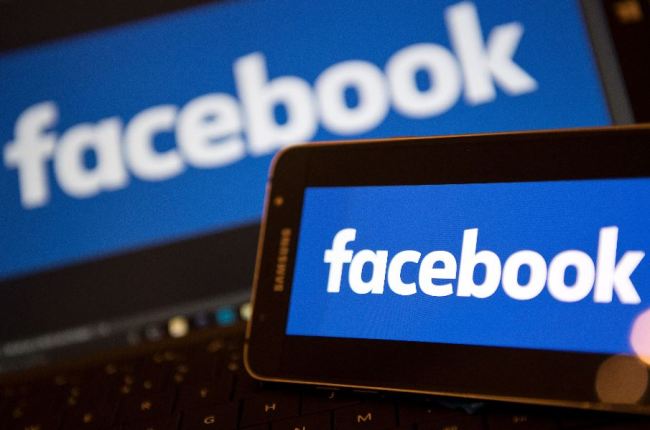Facebook continues to thrive, adds volume to portal-based news channel
By Bak Se-hwanPublished : Jan. 1, 2017 - 18:48
Over the past decade, South Koreans have come to a realization: Facebook is needed to stay connected.
Novel advances in smartphones and faster connectivity speeds have made it easier for people living in rural and urban areas to communicate, create and share content -- particularly for Facebook users.
Apart from being a nationwide social hub that connects people, the beloved digital platform is fast becoming a news source for the younger generation in Korea, where web portal giants like Naver dominate most of the news distribution channels through their own web service.
Novel advances in smartphones and faster connectivity speeds have made it easier for people living in rural and urban areas to communicate, create and share content -- particularly for Facebook users.
Apart from being a nationwide social hub that connects people, the beloved digital platform is fast becoming a news source for the younger generation in Korea, where web portal giants like Naver dominate most of the news distribution channels through their own web service.

For regular users, Facebook presents a continuous stream of news and even live videos provided by local news outlets, carefully prioritized by algorithms that get individuals to unconsciously click on links.
It is a convenient tool to get information especially for those who work late and do not have the luxury of watching the evening news from their own sofa.
Kim Sung-woo, a 27-year-old who works in the distribution industry in central Seoul, said he is a fan of JTBC Newsroom, the cable TV network that broke the Park Geun-hye scandal. “It starts at 8 p.m., but I mostly watch the broadcast or read articles later on Facebook before I go to sleep. This way suits me better.”
Coupled with a user friendly interface and features, the website started to gain a solid footing here around 2011.
Now, the social hub looks set to lure more media companies in the country to use its platform as a fresh channel for distributing news, drawing a larger audience through its algorithms driven in part by likes and shares.
“Considering Facebook‘s Mobile-First strategy and the rapid growth of video environment for News Feed in the platform, it is by no means a surprise to see a rise in the number of users, especially in Korea,” an industrial watchdog who has knowledge of the company here said.
“The nation’s technological advances coupled with the highest smartphone penetration rate in the world make for a perfect environment for users who never stop tapping and swiping their screens searching for more news,” he added.
Of course, digital platform has its own problems involving a controversial position to seemingly embrace the role of a media company -- although not a traditional one. It has been the issue of debate for many who fear that it would do a lot more than just distribute news as the arbiter of truth.
But for some, it is a good signal of diversifying business models to remove red ink from local media outlets.
“The right question to ask would be, ‘Will Facebook bring about changes to the monopolized news distribution environment here?’” Hahn Kyu-sup, journalism professor at Seoul National University told The Korea Herald.
For him, the failure to do so would lead local news organizations to increasingly rely on traffic via Naver to the point of subordination.
South Koreans usually visit Naver’s Newsstand on the website --where some 150 news outlets singed up the contract to be assigned a page on it so that they can put up and curate their own articles. The majority of their profitability has come straight from Naver, until now.
“Whether it be Facebook or local social networking services like KakaoStory, more diversified distribution channels mean better opportunities to maximize profits and, therefore, enhance competitiveness for media companies,” Hahn said. “And most importantly, it’s always convenient for readers.”
By Bak Se-hwan (sh@heraldcorp.com)








![[Graphic News] More Koreans say they plan long-distance trips this year](http://res.heraldm.com/phpwas/restmb_idxmake.php?idx=644&simg=/content/image/2024/04/17/20240417050828_0.gif&u=)
![[KH Explains] Hyundai's full hybrid edge to pay off amid slow transition to pure EVs](http://res.heraldm.com/phpwas/restmb_idxmake.php?idx=644&simg=/content/image/2024/04/18/20240418050645_0.jpg&u=20240419100350)





![[From the Scene] Monks, Buddhists hail return of remains of Buddhas](http://res.heraldm.com/phpwas/restmb_idxmake.php?idx=652&simg=/content/image/2024/04/19/20240419050617_0.jpg&u=20240419175937)

![[KH Explains] Hyundai's full hybrid edge to pay off amid slow transition to pure EVs](http://res.heraldm.com/phpwas/restmb_idxmake.php?idx=652&simg=/content/image/2024/04/18/20240418050645_0.jpg&u=20240419100350)

![[Today’s K-pop] Illit drops debut single remix](http://res.heraldm.com/phpwas/restmb_idxmake.php?idx=642&simg=/content/image/2024/04/19/20240419050612_0.jpg&u=)